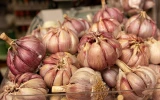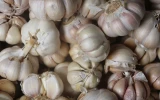Where Is Garlic Grown in the US? (Best Growing Zone)
Garlic cultivation requires a specific climate characterized by a cold period essential for bulb development, alongside moderate temperatures and controlled irrigation, ideally found in certain U.S. hardiness zones. In this article, we'll focus on the specific areas in the US that provide the ideal environment for garlic cultivation.
Garlic is extensively grown in the United States, with California leading as the largest producer. The best growing zones for garlic are in USDA zones 3-8, offering a climate that supports its growth cycle from planting in the fall to harvesting in the late spring or early summer.
While California leads the pack, don't be surprised to find garlic growing in states you wouldn't expect. Let's explore how this versatile plant makes its way across different states, revealing the surprising adaptability and resilience of garlic in various American soils.
Summary
- California stands as the top garlic-producing state in the U.S., distinguished by its Mediterranean climate, which is highly conducive to garlic cultivation.
- Oregon is recognized as an emerging competitor in the U.S. garlic industry, leveraging its semi-arid climate and organic farming practices to produce high-quality garlic.
- California, particularly the town of Gilroy, is renowned as the "Garlic Capital of the World" due to its extensive garlic cultivation and the famous Gilroy Garlic Festival.
- To determine if garlic is grown in the USA, look for root fibers, labeling that indicates its origin, the size and clove configuration of the bulb, or purchase directly from known sources like farmer's markets.
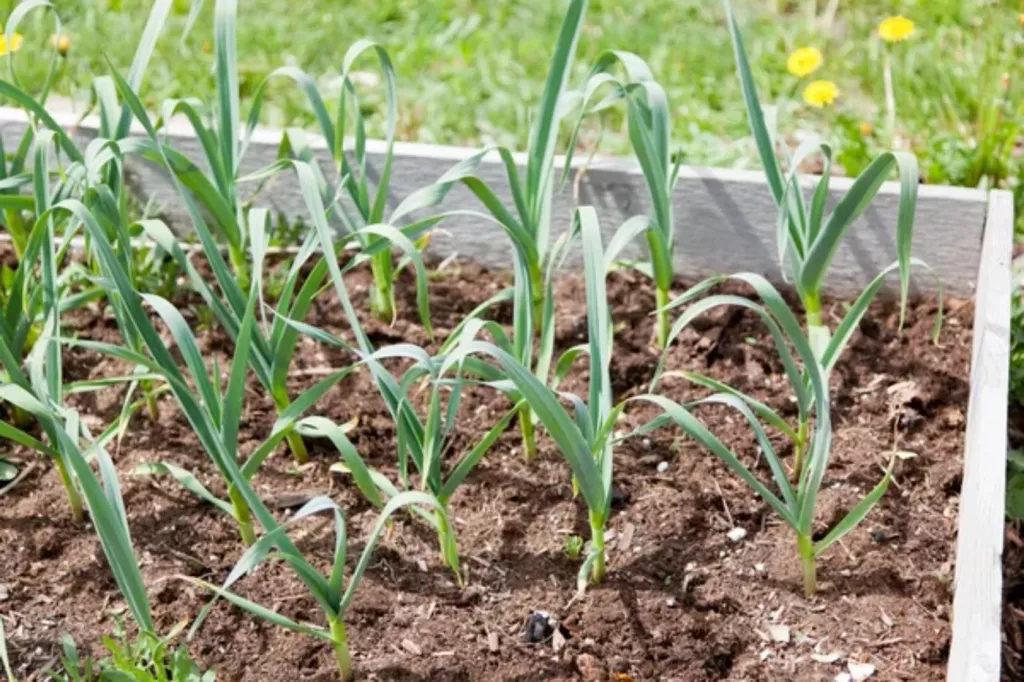
On this page:
Top Garlic-Producing States in the US
| State | Estimated Yield per Acre (lbs) |
|---|---|
| California | 13,000 - 20,000 |
| Oregon | 10,000 - 15,000 |
| Nevada | 8,000 - 12,000 |
California is the garlic powerhouse of the US
California has a Mediterranean climate
California's dominance in garlic production can be attributed to its Mediterranean climate, characterized by wet winters and dry summers.
This climate is ideal for garlic because it requires a period of dormancy, which is naturally provided by the cooler winter months, followed by a warm growing season to mature.
The state's well-draining soils in regions such as Gilroy, often dubbed the "Garlic Capital of the World," provide the perfect conditions for garlic to thrive.
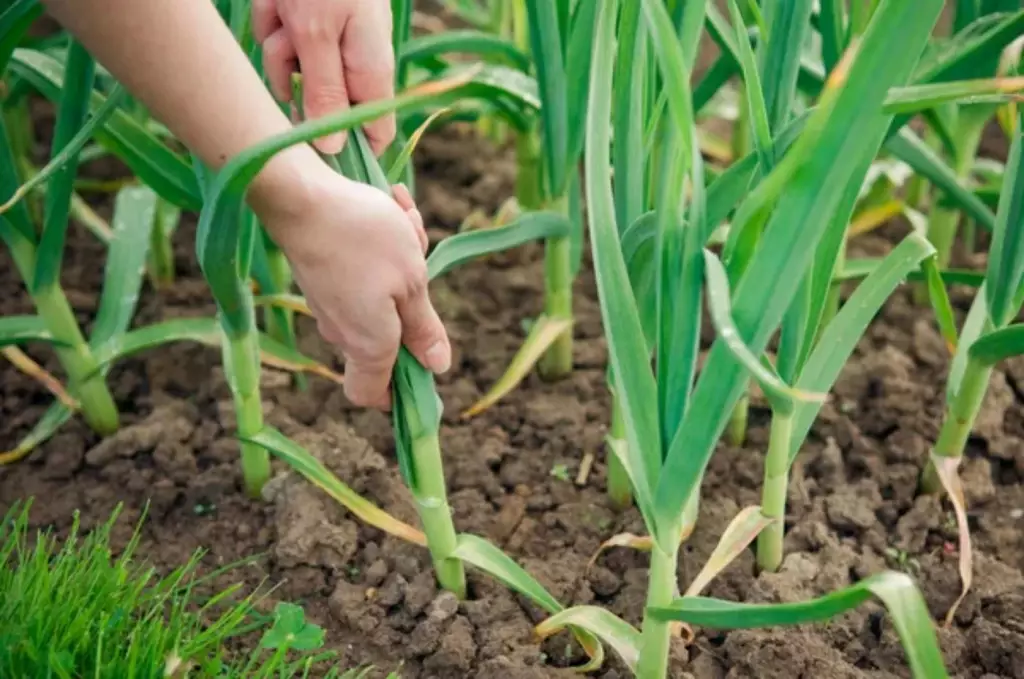
California produces high-quality garlic
California leads not only in quantity but also in the quality of garlic produced. The state's garlic is known for its strong flavor, making it a preferred choice for both fresh market sales and for use in processed foods, such as dehydrated garlic products.
The state's agricultural practices, including advanced irrigation techniques and sustainable farming methods, contribute to higher yields and a consistent product.
Oregon is an emerging competitor
Oregon has a semi-arid climate
Oregon's garlic production benefits from its diverse climate zones, ranging from the wet coastal areas to the dry eastern plateaus.
The specific areas of garlic cultivation often have a semi-arid climate, which is conducive to growing garlic with less disease pressure compared to more humid regions.
Oregon's growers have been adopting organic and sustainable farming practices, which appeal to a niche market looking for organically grown garlic.
Production and market of garlic
While the scale of garlic production in Oregon is smaller than in California, its focus on niche markets for organic and specialty garlic varieties has helped the state make its mark.
The quality of Oregon garlic is high, and the state is exploring ways to increase yield through improved cultivation techniques and varietal research.
Nevada is another niche producer
Nevada has arid and semi-arid climates
The state's garlic cultivation is concentrated in areas where water resources are available for irrigation.
Despite the challenging environment, garlic grows well here, especially in high-altitude areas that provide a significant diurnal temperature variation, contributing to the development of robust flavors in the garlic.
Nevada focuses on fresh market and culinary use of garlic
Garlic production in Nevada is much smaller in scale compared to California and Oregon but is significant for local and regional markets.
The state's producers focus on both fresh market and culinary uses, with an emphasis on sustainable and water-efficient farming practices to cope with the arid climate.
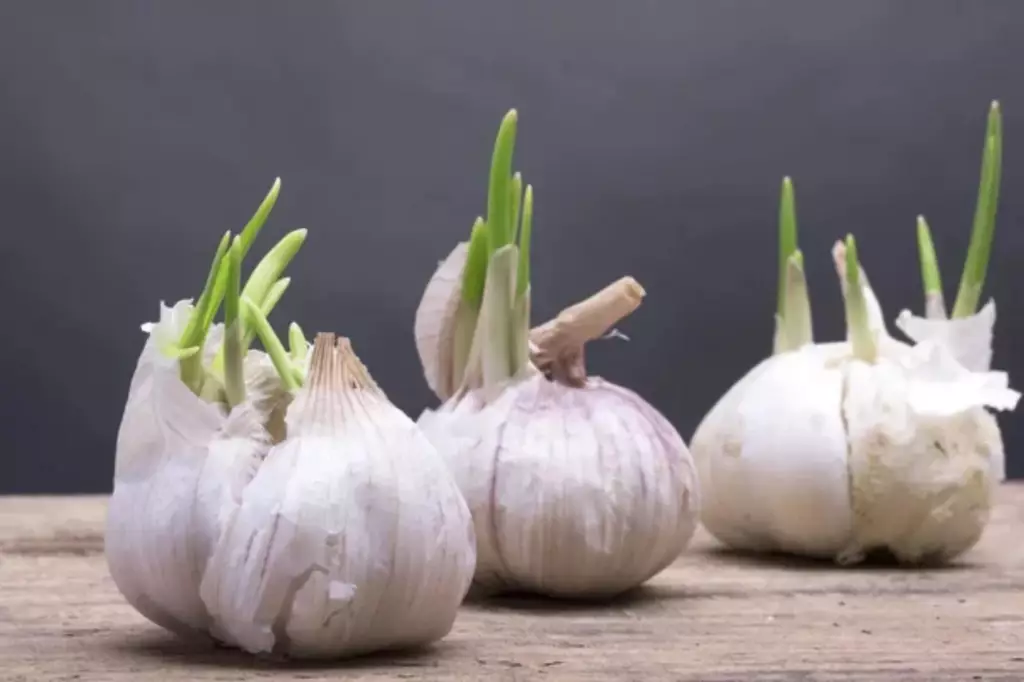
Where Is Garlic Most Grown in the US?
In the United States, California leads the way in garlic production.
Boasting an ideal climate with rich soil, this state is recognized as the prominent grower of garlic domestically. In particular, Gilroy, California, has earned the nickname "Garlic Capital of the World."
While other states like Oregon, Nevada, Washington, and New York also contribute to the nation's garlic supply, their production is considerably less when compared to California's output.
You'll find about 24,000 acres of garlic planted in the U.S., with California's share being the most significant.
Your best chance to grow garlic may depend on your local climate. Gardeners in the coldest zones, from Zone 1 through Zone 6, generally have success with both hardneck and softneck varieties.
If you're in Zones 7 through 10, fall-planted softnecks may be more suitable. Those in Zones 11 to 13 are advised to stick with fall-planted softneck garlic.
What Zone Does Garlic Grow Best In?
Garlic thrives in a range of climates, but it's especially well-suited to areas that experience a cold winter. Specifically, USDA Hardiness Zones 3 through 8 are recognized as ideal for garlic cultivation.
In these zones, the cold temperatures necessary for the development of garlic bulbs occur naturally.
| USDA Hardiness Zone | Planting Window | Notes |
|---|---|---|
| Zone 3-5 | Late September to early October | Cold winter climates; ideal for hardneck garlic varieties. |
| Zones 5-7 | Mid to late October | Transitional zones; both hardneck and softneck can thrive. |
| Zones 7-8 | Late October to November | Milder winter climates; softneck varieties are recommended. |
Garlic thrives in well-drained soil with full sun exposure and benefits from soil enriched with organic matter. Adjusting planting times and choosing the right garlic variety for your zone can significantly influence the success of your garlic crop.
Choosing the right garlic type for your zone can help improve your yield. For instance, softneck garlic varieties are typically recommended for warmer zones due to their less stringent cold requirements, while hardneck types are better for colder zones.
You can also base your choice on which can be the most lucrative garlic variety, as suggested in this article.
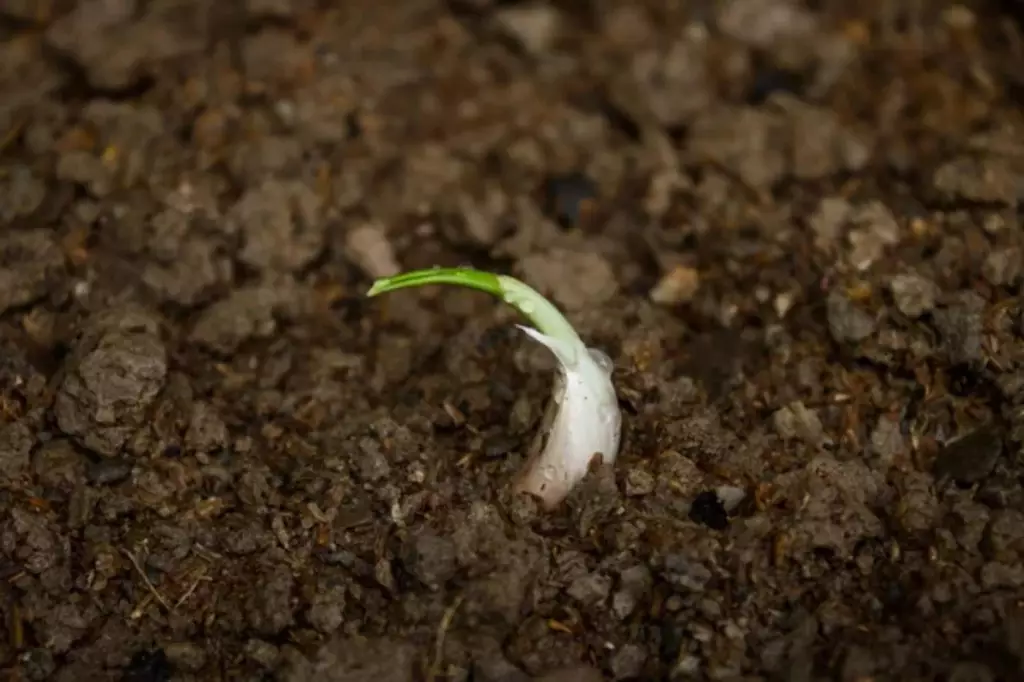
What State Is Known for Garlic?
The state best known for garlic production in the United States is California. California's garlic reputation is notably anchored by the town of Gilroy, which is often referred to as the "Garlic Capital of the World."
This distinction stems from the extensive garlic cultivation in the area, as well as Gilroy's hosting of the annual Gilroy Garlic Festival, an event that celebrates the crop with food, cooking competitions, and entertainment.
Reasons for California's dominance in garlic production
Climate and soil conditions in California
California's climate is particularly well-suited for garlic cultivation. The state offers a long, warm growing season without excessive moisture, which is ideal for garlic.
Additionally, the soil in many parts of California, especially in areas like Gilroy in the Central Valley, is fertile and well-draining, conditions that garlic bulbs need to grow large and flavorful.
Agricultural infrastructure
California's well-developed agricultural infrastructure supports efficient planting, harvesting, and distribution of garlic.
The state has a long history of agricultural innovation, including advanced irrigation techniques and farm management practices that optimize yield and quality.
Market and culinary influence
California is a trendsetter in American culinary movements, with a strong emphasis on fresh, locally sourced ingredients. The prominence of garlic in California cuisine has contributed to its widespread cultivation and use.
Additionally, the state's strategic location and infrastructure facilitate the distribution of California-grown garlic throughout the United States and internationally.
Gilroy Garlic Festival in California
The Gilroy Garlic Festival, which began in 1979, has played a significant role in promoting Gilroy and California's garlic. This annual event draws thousands of visitors from around the country and the world.
It features a wide range of garlic-infused foods, from traditional garlic bread to more inventive creations like garlic ice cream, showcasing the versatility and importance of garlic in cooking.
The festival also emphasizes the community's agricultural roots and supports local charities through its proceeds.
Where Is Garlic Grown in California?
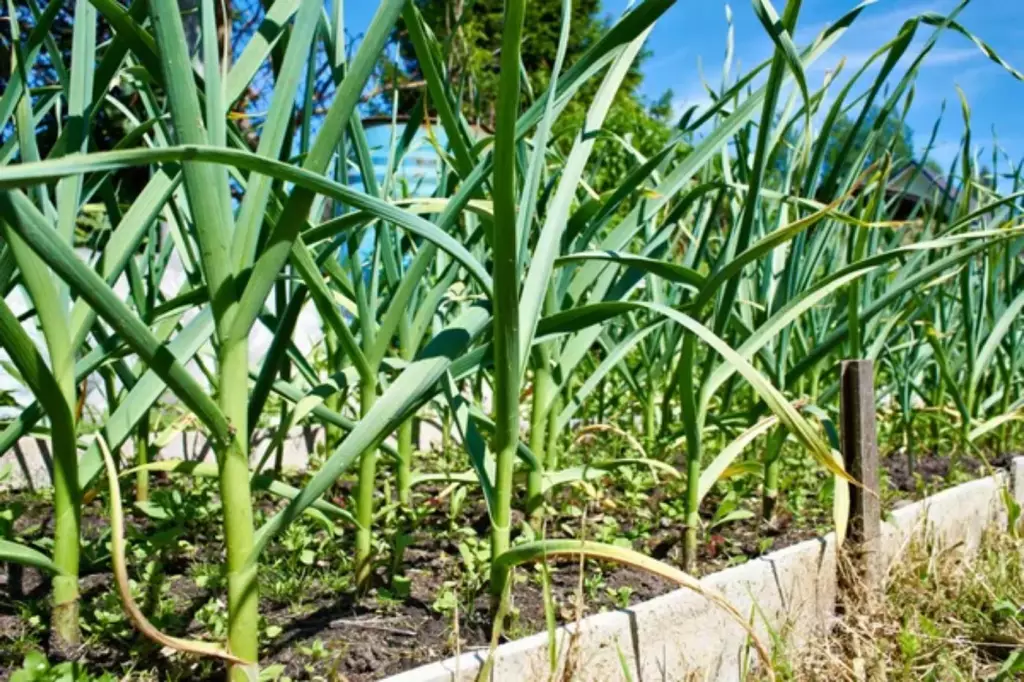
Primary garlic growing regions in California
Gilroy and the surrounding Santa Clara County
-
Location and climate: Gilroy, located in Santa Clara County, is often referred to as the "Garlic Capital of the World." This region benefits from a Mediterranean climate with warm, dry summers and mild, wet winters, which is ideal for garlic cultivation.
-
Importance: Gilroy's reputation as a hub for garlic production is not just a title; it's a reflection of the area's significant contribution to the garlic industry. The region hosts an annual Garlic Festival, celebrating the harvest and its pivotal role in the community and the economy.
-
Cultivation practices: Farmers in Gilroy and the surrounding areas use a combination of traditional farming techniques and modern agriculture technology to optimize yield and quality. Crop rotation, sustainable water management, and pest control practices are integral to their success.
Fresno County
-
Location and climate: Fresno County, located in the heart of the Central Valley, is another key area for garlic production in California. The Central Valley's hot summers and cool winters create an excellent environment for growing garlic.
-
Importance: The county contributes a significant portion of California's garlic output, with many farms specializing in garlic alongside other crops. The region's agricultural infrastructure, including processing facilities, supports efficient handling and distribution.
-
Cultivation practices: Precision agriculture techniques, including drip irrigation and controlled environment agriculture, are increasingly adopted in Fresno County to enhance productivity and sustainability.
Monterey County
-
Location and climate: Monterey County benefits from a coastal climate influenced by the Pacific Ocean, which moderates temperatures throughout the growing season. This climate is conducive to growing high-quality garlic.
-
Importance: The county is known for producing a variety of agricultural products, including garlic. Its proximity to major ports facilitates the export of garlic and other produce to international markets.
-
Cultivation practices: Growers in Monterey County employ crop rotation and integrated pest management (IPM) strategies to maintain soil health and reduce the impact of pests and diseases on garlic crops.
How to Know if Garlic Is Grown in the USA?
To identify whether your garlic was grown in the United States, consider these tips:
Check the roots
U.S. garlic typically retains some root fibers attached to the bulb's base. These remnants indicate domestic origin because they suggest less processing.
Look for labeling
U.S. garlic often comes with a label indicating its origin. Seek out tags or stickers on the garlic bulbs or the packaging they come in. If it says "Grown in USA," you're looking at domestically grown garlic.
Examine the bulb
American garlic bulbs tend to be larger with fewer—and sometimes larger—cloves. Chinese garlic often has smaller cloves in a tighter bulb.
Purchase from known sources
Farmer's markets and local farms offer a chance to buy garlic you can confirm as American-grown. Growers can tell you about their garlic growing zones and practices.

